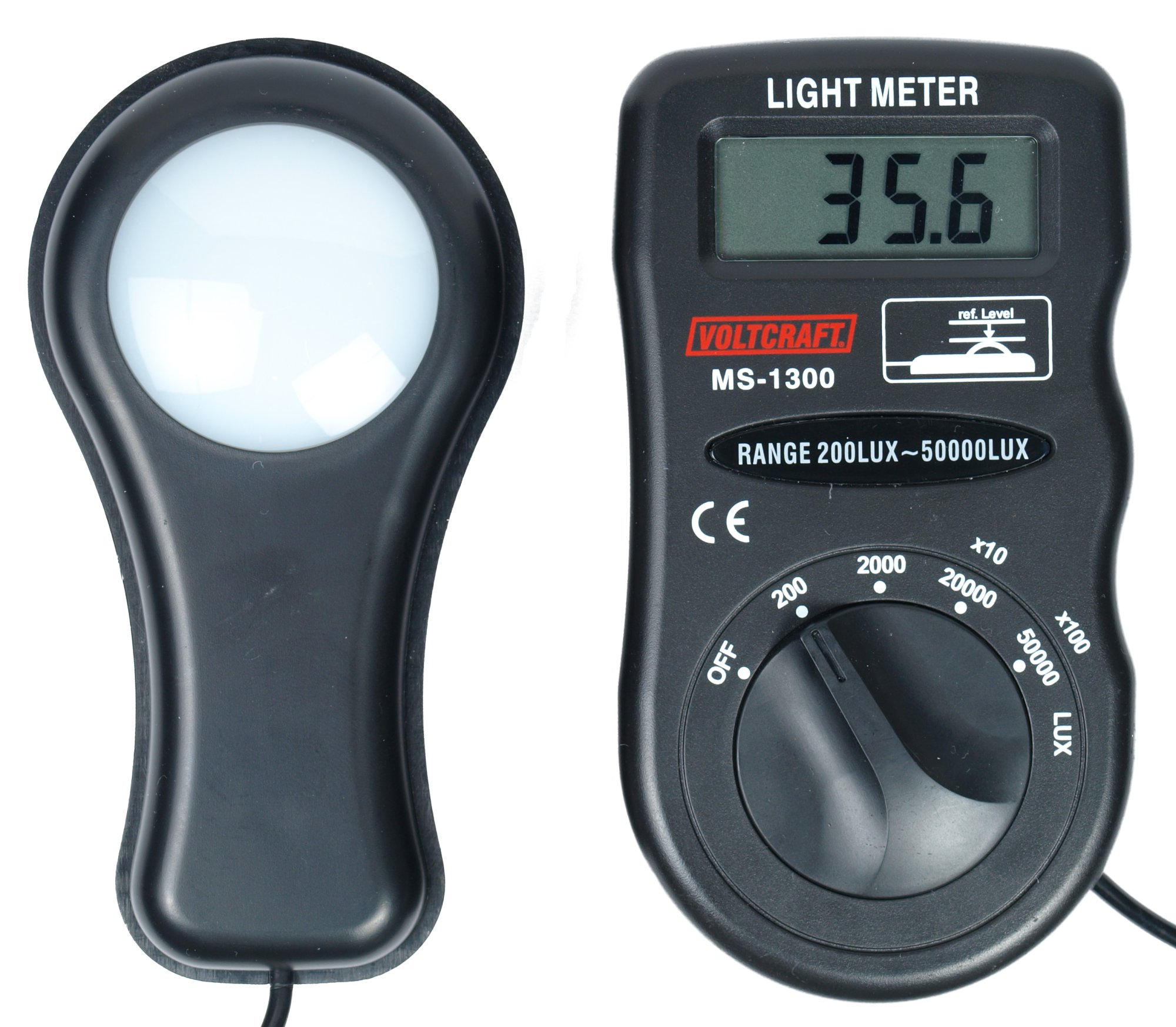|
Sun Photometer
A sun photometer is a type of photometer conceived in such a way that it points at the sun. Recent sun photometers are automated instruments incorporating a sun-tracking unit, an appropriate optical system, a spectrally filtering device, a photodetector, and a data acquisition system. The measured quantity is called ''direct-sun radiance''. When a sun-photometer is placed somewhere within the earth's atmosphere, the measured radiance is not equal to the radiance emitted by the sun (i.e. the ''solar extraterrestrial radiance''), because the solar flux is reduced by atmospheric absorption and scattering. Therefore, the measured radiant flux is due to a combination of what is emitted by the sun and the effect of the atmosphere; the link between these quantities is given by Beer's law. The atmospheric effect can be removed with Langley extrapolation; this method therefore allows measuring the solar extraterrestrial radiance with ground-based measurements. Once the extraterrestri ... [...More Info...] [...Related Items...] OR: [Wikipedia] [Google] [Baidu] |
Langley Extrapolation
Langley extrapolation is a method for determining the Sun's irradiance at the top of the atmosphere with ground-based instrumentation, and is often used to remove the effect of the atmosphere from measurements of, for example, aerosol optical thickness or ozone. It is based on repeated measurements with a sun photometer operated at a given location for a cloudless morning or afternoon as the Sun moves across the sky. It is named for American astronomer and physicist Samuel Pierpont Langley. Theory It is known from Beer's law that, for every instantaneous measurement, the ''direct-Sun irradiance'' ''I'' is linked to the ''solar extraterrestrial irradiance'' ''I''0 and the atmospheric optical depth \tau by the following equation: where ''m'' is a geometrical factor accounting for the slant path through the atmosphere, known as the airmass factor. For a plane-parallel atmosphere, the airmass factor is simple to determine if one knows the solar zenith angle θ: ''m'' = 1/cos(& ... [...More Info...] [...Related Items...] OR: [Wikipedia] [Google] [Baidu] |
Dobson Ozone Spectrophotometer
The Dobson spectrophotometer, also known as Dobsonmeter, Dobson spectrometer, or just Dobson is one of the earliest instruments used to measure atmospheric ozone. History The Dobson spectrometer was invented in 1924 by Gordon Dobson. A history of the development of the instrument is here and an example of one of Dobson's own instruments remains on display in the University of Oxford Department of Physics. Operation Dobson spectrophotometers can be used to measure both total column ozone and profiles of ozone in the atmosphere. Ozone is tri-atomic oxygen, O3; ozone molecules absorb harmful UV light in the atmosphere before it reaches the surface of the earth. No UVC radiation penetrates to the ground as it is absorbed in the ozone-oxygen cycle. However some longer-wave and less harmful UVB and most of the UVA is not absorbed as ozone is less opaque to these frequencies, so they penetrate to the ground level of Earth in higher quantities. The sources of light used may vary. Be ... [...More Info...] [...Related Items...] OR: [Wikipedia] [Google] [Baidu] |
Ozone
Ozone (), or trioxygen, is an inorganic molecule with the chemical formula . It is a pale blue gas with a distinctively pungent smell. It is an allotrope of oxygen that is much less stable than the diatomic allotrope , breaking down in the lower atmosphere to (dioxygen). Ozone is formed from dioxygen by the action of ultraviolet (UV) light and electrical discharges within the Earth's atmosphere. It is present in very low concentrations throughout the latter, with its highest concentration high in the ozone layer of the stratosphere, which absorbs most of the Sun's ultraviolet (UV) radiation. Ozone's odour is reminiscent of chlorine, and detectable by many people at concentrations of as little as in air. Ozone's O3 structure was determined in 1865. The molecule was later proven to have a bent structure and to be weakly diamagnetic. In standard conditions, ozone is a pale blue gas that condenses at cryogenic temperatures to a dark blue liquid and finally a violet-black soli ... [...More Info...] [...Related Items...] OR: [Wikipedia] [Google] [Baidu] |
Water Vapour
(99.9839 °C) , - , Boiling point , , - , specific gas constant , 461.5 J/( kg·K) , - , Heat of vaporization , 2.27 MJ/kg , - , Heat capacity , 1.864 kJ/(kg·K) Water vapor, water vapour or aqueous vapor is the gaseous phase of water. It is one state of water within the hydrosphere. Water vapor can be produced from the evaporation or boiling of liquid water or from the sublimation of ice. Water vapor is transparent, like most constituents of the atmosphere. Under typical atmospheric conditions, water vapor is continuously generated by evaporation and removed by condensation. It is less dense than most of the other constituents of air and triggers convection currents that can lead to clouds. Being a component of Earth's hydrosphere and hydrologic cycle, it is particularly abundant in Earth's atmosphere, where it acts as a greenhouse gas and warming feedback, contributing more to total greenhouse effect than non-condensable gases such as carbon dioxide and ... [...More Info...] [...Related Items...] OR: [Wikipedia] [Google] [Baidu] |
Optical Depth
In physics, optical depth or optical thickness is the natural logarithm of the ratio of incident to ''transmitted'' radiant power through a material. Thus, the larger the optical depth, the smaller the amount of transmitted radiant power through the material. Spectral optical depth or spectral optical thickness is the natural logarithm of the ratio of incident to transmitted spectral radiant power through a material. Optical depth is dimensionless, and in particular is not a length, though it is a monotonically increasing function of optical path length, and approaches zero as the path length approaches zero. The use of the term "optical density" for optical depth is discouraged. In chemistry, a closely related quantity called "absorbance" or "decadic absorbance" is used instead of optical depth: the common logarithm of the ratio of incident to transmitted radiant power through a material, that is the optical depth divided by ln 10. Mathematical definitions Optical depth O ... [...More Info...] [...Related Items...] OR: [Wikipedia] [Google] [Baidu] |
Atmosphere
An atmosphere () is a layer of gas or layers of gases that envelop a planet, and is held in place by the gravity of the planetary body. A planet retains an atmosphere when the gravity is great and the temperature of the atmosphere is low. A stellar atmosphere is the outer region of a star, which includes the layers above the opaque photosphere; stars of low temperature might have outer atmospheres containing compound molecules. The atmosphere of Earth is composed of nitrogen (78%), oxygen (21%), argon (0.9%), carbon dioxide (0.04%) and trace gases. Most organisms use oxygen for respiration; lightning and bacteria perform nitrogen fixation to produce ammonia that is used to make nucleotides and amino acids; plants, algae, and cyanobacteria use carbon dioxide for photosynthesis. The layered composition of the atmosphere minimises the harmful effects of sunlight, ultraviolet radiation, the solar wind, and cosmic rays to protect organisms from genetic damage. The current comp ... [...More Info...] [...Related Items...] OR: [Wikipedia] [Google] [Baidu] |
Photometer
A photometer is an instrument that measures the strength of electromagnetic radiation in the range from ultraviolet to infrared and including the visible spectrum. Most photometers convert light into an electric current using a photoresistor, photodiode, or photomultiplier. Photometers measure: *Illuminance *Irradiance *Light absorption * Scattering of light *Reflection of light *Fluorescence *Phosphorescence *Luminescence History Before electronic light sensitive elements were developed, photometry was done by estimation by the eye. The relative luminous flux of a source was compared with a standard source. The photometer is placed such that the illuminance from the source being investigated is equal to the standard source, as the human eye can judge equal illuminance. The relative luminous fluxes can then be calculated as the illuminance decreases proportionally to the inverse square of distance. A standard example of such a photometer consists of a piece of paper with an o ... [...More Info...] [...Related Items...] OR: [Wikipedia] [Google] [Baidu] |
Scattering
Scattering is a term used in physics to describe a wide range of physical processes where moving particles or radiation of some form, such as light or sound, are forced to deviate from a straight trajectory by localized non-uniformities (including particles and radiation) in the medium through which they pass. In conventional use, this also includes deviation of reflected radiation from the angle predicted by the law of reflection. Reflections of radiation that undergo scattering are often called ''diffuse reflections'' and unscattered reflections are called ''specular'' (mirror-like) reflections. Originally, the term was confined to light scattering (going back at least as far as Isaac Newton in the 17th century). As more "ray"-like phenomena were discovered, the idea of scattering was extended to them, so that William Herschel could refer to the scattering of "heat rays" (not then recognized as electromagnetic in nature) in 1800. John Tyndall, a pioneer in light scattering researc ... [...More Info...] [...Related Items...] OR: [Wikipedia] [Google] [Baidu] |
Absorption (electromagnetic Radiation)
In physics, absorption of electromagnetic radiation is how matter (typically electrons bound in atoms) takes up a photon's energy — and so transforms electromagnetic energy into internal energy of the absorber (for example, thermal energy). A notable effect of the absorption of electromagnetic radiation is attenuation of the radiation; attenuation is the gradual reduction of the intensity of light waves as they propagate through the medium. Although the absorption of waves does not usually depend on their intensity (linear absorption), in certain conditions (optics) the medium's transparency changes by a factor that varies as a function of wave intensity, and saturable absorption (or nonlinear absorption) occurs. Quantifying absorption Many approaches can potentially quantify radiation absorption, with key examples following. * The absorption coefficient along with some closely related derived quantities * The attenuation coefficient (NB used infrequently with meaning ... [...More Info...] [...Related Items...] OR: [Wikipedia] [Google] [Baidu] |






